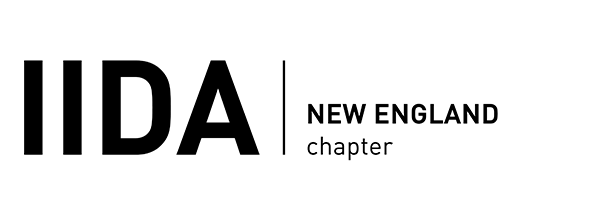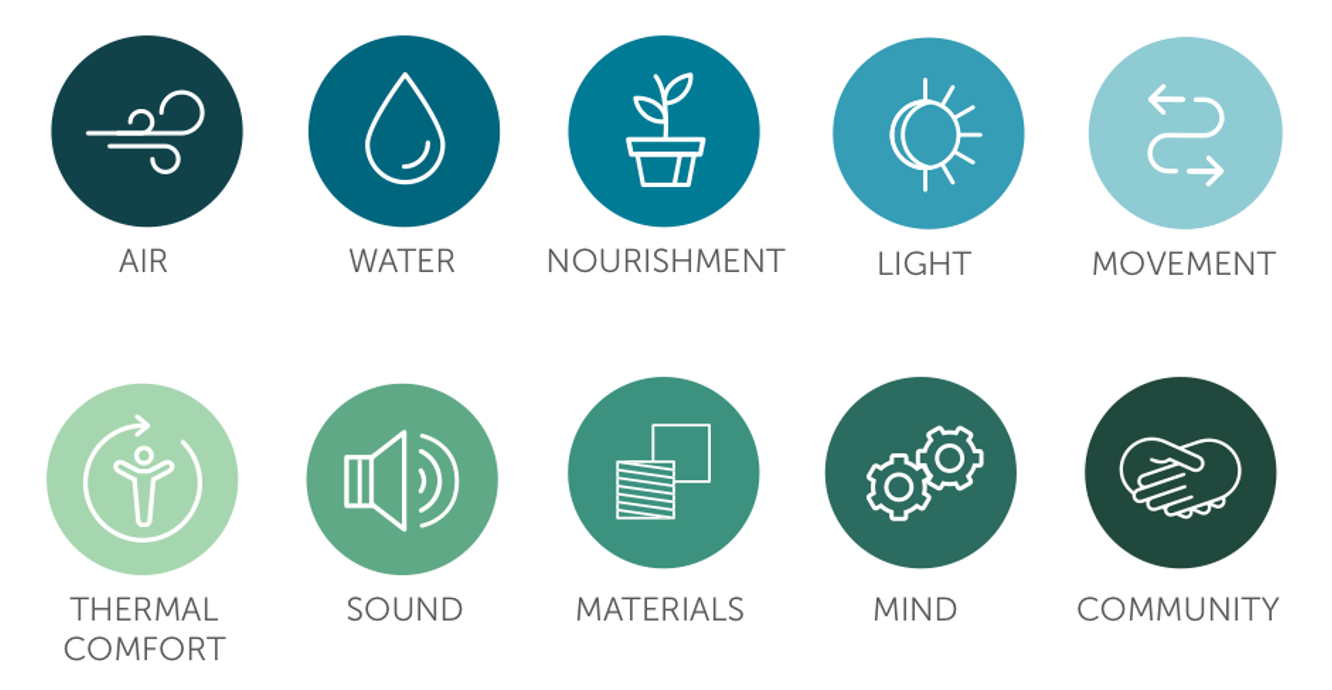|
|
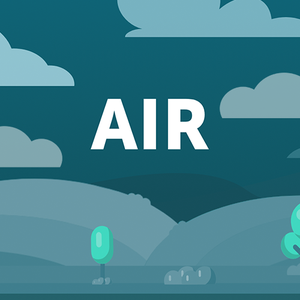 |
Mechanical ventilation is standard in commercial spaces but most homes rely on natural ventilation. Remote workers can monitor their indoor air quality with devices that detect levels of common pollutants and humidity. Running fans to circulate air and using air purifiers to capture contaminants can help improve indoor air quality. The WELL Building Standard requires humidity levels to be between 30%-60%. Humidity levels outside of that range induce greater stress responses from occupants and can cause airborne viruses, mold, and bacteria growth. |
| Drinking plenty of water is known to help regulate body temperature, prevent illness, and improve sleep quality. Since the human body is over 60% water, even mild dehydration can significantly affect a worker’s energy levels and lead to reduced memory and brain performance. Staying hydrated throughout the day can be challenging with so many caffeinated or sugary drinks available, especially at home. By stocking the fridge with unsweetened tea or sparkling water and keeping a reusable water bottle filled at their desk and making a conscious effort to refill it throughout the day, workers can stay hydrated and keep their productivity levels high. |  |
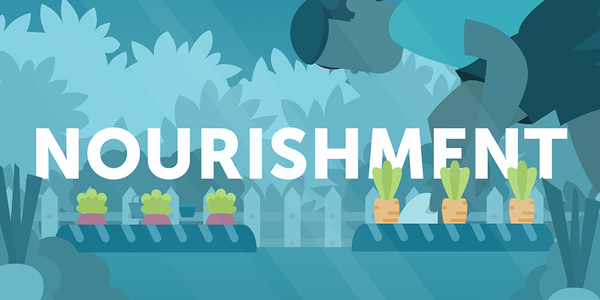 |
Poor nutrition can significantly affect performance levels and cause employees to experience fatigue, low energy, and decreased mental effectiveness. The WELL Standard promotes the consumption of fresh fruits and vegetables while avoiding highly processed foods with artificial ingredients. Keeping healthy, low-sugar foods close at hand while working from home can help remote workers avoid a mid-afternoon crash and stay focused throughout the workday. |
| The quantity and quality of lighting in a workspace greatly impact worker productivity and cognitive function. Poor lighting can reduce energy, dampen mood, and cause eyestrain and headaches. Remote workers can set up their workstation either in front of or next to large windows where they’re exposed to bright, full-spectrum light throughout the day. Adding an indirect light source that illuminates the entire workspace helps reduce the direct glare of overhead lights typically found in a home environment. |  |
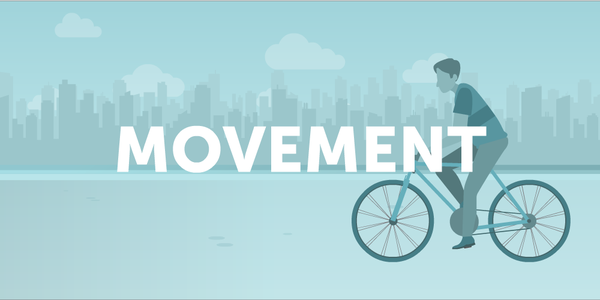 |
Research has shown that movement is key to both physical and mental health. Switching from sitting to standing throughout the day, increases blood flow and circulation, translating to a natural jolt of energy. WELL v2 promotes physical activity like taking short walks or stretching which can sharpen focus. Remote workers can increase their work-from-home comfort by adding adjustable height desks, ergonomic task chairs, and anti-fatigue mats or footrests. |
| Air temperature, radiant temperature, air velocity, and humidity are all environmental factors that affect a person’s thermal comfort. Working in direct sunlight, under an air-conditioning vent or skylight, or near a heat source can lead to fatigue, lowered concentration, and productivity. With the use of blinds, portable heating devices, and ensuring effective ventilation, remote workers can create a thermally comfortable home office environment. |  |
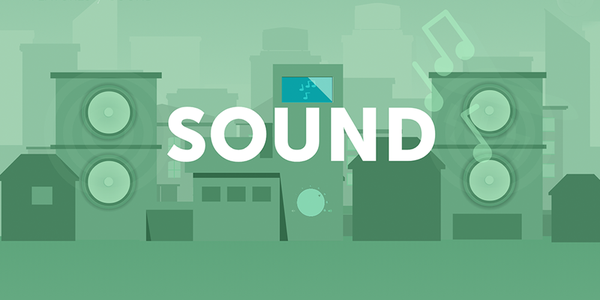 |
Although remote workers may not have much control over the background noise they experience at home from sources like kids and outdoor noise pollution, there are ways to help mitigate it. Using a sound masking system such as a white noise machine can help suppress speech from other occupants and promote greater acoustical privacy. Incorporating plush furniture within the workspace, adding rugs to hard surfaces, or even acoustic panels can help prevent distracting background noise from disturbing a remote worker’s focus. |
| WELL v2 promotes limiting occupant exposure to harmful chemicals and toxic materials. Although most legacy chemicals like lead, asbestos, and mercury are now banned in new construction projects, they continue to pose risks to workers living in older homes. Before repairing or renovating a home office themselves, remote workers should hire professionals who can test for and mitigate exposure risks to these chemicals. |  |
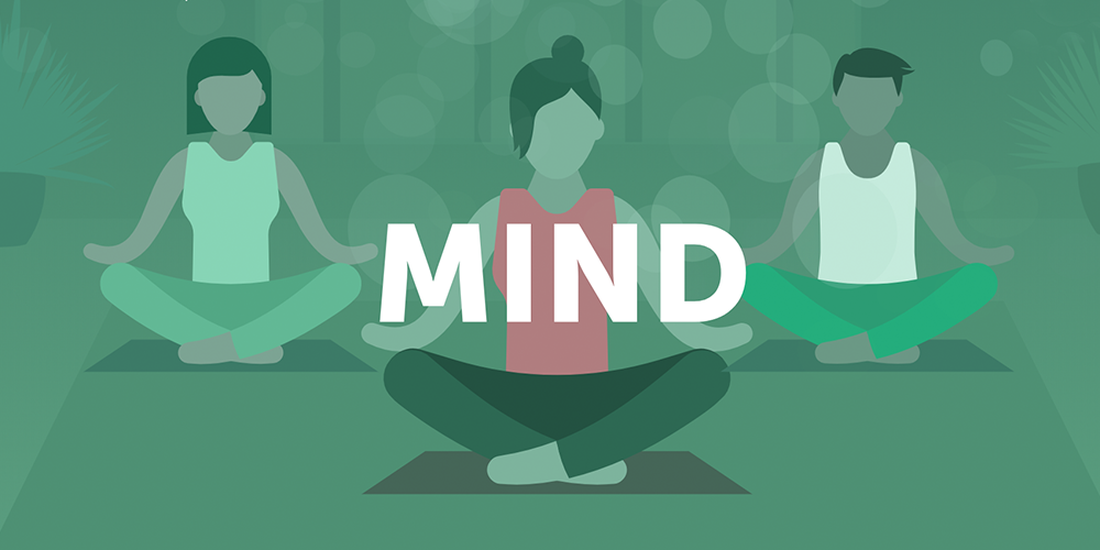 |
Spending time in nature has been shown to significantly benefit mental health and reduce stress levels. Remote workers can incorporate elements from nature into their home office environment by bringing in low-maintenance houseplants, adding greenery or landscaping outside a window, or with photographs of natural elements or locations. |
| Fully remote work can leave employees feeling isolated and cut off from engaging with their in-office colleagues. Remote workers should remember that even though they are at home, they are not alone. Participating in virtual and in-person activities, when possible, can keep remote workers included and connected to their workplace community. | 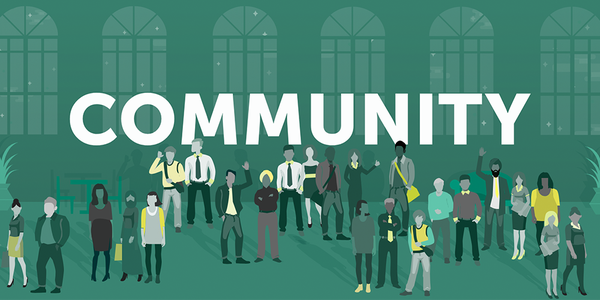 |
Interested in learning more about the WELL v2 Building Standard? Visit this link to find out more!
Designer Monologues the Podcast from IIDA New England with your host Katie Corcoran Garcia is officially LIVE!! On this show, we’ll share the stories behind the design of repurposing, developing and reshaping our communities. Incubated from the minds and skills of New England’s talented design community, you’ll hear how visual inspiration can come from nature, our history, current trends and more as we take you on a story-telling journey behind design.
Check out Episode 1 featuring Jen Tedeshi from SMMA to learn about the story behind the design of Waters IMMERSE Find the original DM article here.

We hosted our fall Board retreat in July with a focus on creating our 2022-2023 strategic plan and strengthening our connections as a Board. We held some deep, insightful, and thoughtful discussions surrounding the past 2+ years and how that has impacted and shaped the world we live in today. We also took time to reflect on and share our own IIDA and professional journey to help unify us. Here are some of the items that our chapter is focusing on for the 2022-2023 term:
- Fulfilling our 2022 Catalyst Grant requirements which stemmed from the EDI Workshops that we were able to offer all of our Committee members this spring. This includes identifying measurable goals that each committee can put into place based on what was gained at the workshops.
- Inviting a 2022-23 Board Advisor who can help with our focus on EDI and the K-12 initiative
- Strengthening a New England regional oriented approach to what the chapter provides its members through events and professional development
- Maintain and continue to develop equity in how events can be attended
- Continuing to advocate for more inclusive member voting rights and abilities to serve on a Chapter’s Board of Directors
- Volunteer retention and recruitment
- Continuing to increase advocacy awareness and give our members and community the tools they need to advocate for the profession
- Continued partnerships and collaborations between our committees allowing us to focus more on quality rather than quantity as well as engage more of our community
The IIDA NE Board of Directors meets monthly and will continue to discuss, develop, and make progress on the Strategic Plan initiatives and we will keep you updated as the year progresses.
We are always looking for committee volunteers and we have some fun and exciting opportunities available! If you or someone you know is looking to find out more about some of our open positions, please visit our committee openings page on the website. We’re also very excited to be launching our new website in the coming weeks!
We have an exciting year ahead and your Board is committed to continuing to advocate for and serve you and our community. We have several events planned throughout the region in the next couple of months, so be sure to check out our event calendar to see what’s coming up. Can’t wait to see everyone soon and please don’t hesitate to reach out to any member of the Board or staff if there’s anything we can do to help serve you.

Lisa Statkiewicz
President, IIDA NE Chapter

Be sure to check in with the IIDA New England calendar for upcoming events (both virtual and in-person) offered in our community. Here's a sneak peek at some upcoming events:
- IIDA NE 15th Annual Design Awards // Wednesday, September 14 *IN PERSON & VIRTUAL
- IIDA NE Advocacy Event - Providence // Wednesday, September 28
- IIDA NE Hartford Baggos & Brews // Wednesday, September 28 *IN PERSON
- IIDA NE Art Uncorked // Wednesday, October 5 *IN PERSON & VIRTUAL
- IIDA NE EDI Committee Block Party // Thursday, October 13 *IN PERSON
- IIDA NE Philanthropy Food Project Volunteer Day // Saturday, October 15 *IN PERSON
- IIDA NE Providence Business & Brews // Thursday, October 20 *IN PERSON
- IIDA NE Hartford Farm Volunteer Day // Saturday, October 22 *IN PERSON
Also, be sure to keep an eye on our IIDA New England job postings, which are updated regularly!

Check out the list of IIDA New England Emerging Leaders Class of 2022!
Do you have an idea that you would like to share with the design community or see highlighted here in The Wire? Share your ideas here.

Stay tuned for the next Sponsor Highlight!
Follow IIDA New England on social media and visit our website to keep up with the latest and greatest!
